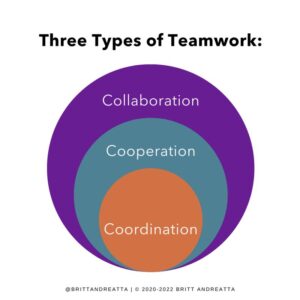Why Trust Matters at Work and How to Increase It

Studies show that trust is a vital component of organizational success. Trust drives better employee engagement and retention, higher customer satisfaction, better innovation, faster agility, and ultimately more productivity and profit. High-trust companies experience 50 percent less turnover and triple the stock market returns.
There is a scientific way to measure trust. When humans experience trust, our brains produce a neurotransmitter called oxytocin, releasing it into the bloodstream. When oxytocin binds with the receptors through our central nervous system, our physiology changes, making us feel calmer, happier, and more trusting. Dr. Shelley Taylor of UCLA’s Social Neuroscience Lab has labeled oxytocin the “tend and befriend” response, which markedly differs from our “fight or flight” response.
Neuroscientist Dr. Paul Zak of the Center for Neuroeconomic Studies, studies trust in the workplace. Key findings from his research include:
- The relationship between trust and oxytocin is universal, spanning cultures, races, and geographic regions.
- Oxytocin increases a person’s empathy for others—people at high-trust companies feel 66 percent closer to their colleagues and have 11 percent more empathy for them.
- High-stress environments inhibit oxytocin production, with stressed people less effectively able to interact with others.
- People at high-trust companies are healthier, with 74 percent less stress and 13 percent fewer sick days. They also have 106 percent more energy at work and 40 percent less burnout.
- A sense of purpose promotes oxytocin production.
The Power of Teams
Trust within teams is crucial. Today, teams power the majority of work done in organizations worldwide. A study found that people are in 3 times more team meetings and calls per week than before. However, nearly one-third of employees considered leaving their job because of negative team dynamics. High turnover can be devastating because the group’s development not only pauses but backtracks every time a team member leaves and is replaced, impacting the organization’s success.
Teams are perhaps the single most important entity in today’s workplace: When we get them right, we can propel individuals and the organization forward. And when we get them wrong, we can cripple an organization with dysfunction, learned helplessness, and loss of its best people.
It is important to note that the impact of virtual teams is significant worldwide. Research shows that over 75% of employees are engaged in at least one virtual international team, while 27% are involved in four or more. Additionally, 62% of workers collaborate with teams comprising three or more cultural backgrounds.
While all of this diversity and connection can be positive, it can also make coworking difficult as people navigate time, and geography, as well as cultural and linguistic differences, to communicate and collaborate. One study found that 84% of people reported that virtual communication is more difficult than in-person communication. Yet only 22% receive training to make their team participation more effective.
Trust Fuels Collaboration
Trust is vital for true collaboration, which drives success in every industry. Teams move back and forth along the continuum of teamwork, from cooperation to coordination to collaboration. Each has different goals and requires different skill sets, but collaboration can only occur with trust.


Explore what differentiates each of the types:
- Coordination The orchestrated efforts of individuals or groups, to align or synchronize separate actions. They exchange relevant information and resources in support of each other’s distinct goals. In other words, people co-ordinate (align/sync) distinct efforts (such as IT upgrading computers and facilities changing out desks) to create more efficiency, but they remain independent. Coordination requires basic communication and planning skills.
- Cooperation The coordinated efforts of a group of two or more people to perform their assigned portion of an agreed-upon shared process or task. They are dependent on each other to execute a mutual objective. People co-operate to perform their part of a shared task as planned. For example, IT works with Finance and Shipping to ensure new computers are purchased and delivered on time. Cooperation requires a clear process for execution and accountability.
- Collaboration The mutual engagement of a group of two or more in a creative effort that achieves a shared goal or vision. They are interdependent, with each unique contribution essential to the whole. People co-labor in an act of creation, and the input of all the contributors changes the result. An example would be several people and departments working together to shift an organization’s culture. Collaboration requires the most advanced skills of all. These include: building trust, engaging in creativity and innovation, and having a mindful process for resolving the inevitable conflict from this most complex form of work.
While collaboration is vital for the success of every organization, it is the least understood skill. People often use the term when they mean cooperation or coordination. The author of The Collaborative Instinct, Jelenko Dragisic, puts it this way, “If collaboration does not change you, then you are not collaborating. Collaboration does not come about without some kind of organizational enlightenment.”
Your team leaders and managers must build trust, psychological safety, and purpose for effective collaboration.
6 Science-Based Strategies to Increase Trust in Teams
To build trust among your teams, use these 6 science-based strategies.
1. Make your teams the right size
Research suggests that the ideal size is between 4 and 8 people. Three people are unstable because it creates a two-against-one dynamic. While 9 or more yields diminishing productivity because people feel less accountable for their efforts.
2. Empower the science of connection and belonging
We form and maintain bonds with others in many ways, all of which are rooted in our biology. Several brain structures are dedicated to accurately reading emotions in others. Our brain scans for facial expressions, body language and even detects information about each other and our relationships through invisible pheromones and brain waves.
All of these methods are strained or missing on video calls. As a result, we have to work harder neurologically to communicate online, creating “zoom fatigue” and a sense of disconnection. According to the Hybrid Workplace Report, 77% of workers say they suffer from decreased productivity due to video conferencing. In addition, 40% state that the lack of human connection/coworker interaction was “very or extremely challenging.”
Interpersonal interactions are the connective tissue that helps people build rapport and trust. Those casual interactions serve two critical purposes: the opportunity to connect about more personal things (“What did you do this weekend?”) as well as the opening to talk about work issues that don’t fit within the agendas of regular meetings (“Hey, I want to run an idea past you”).
Team leaders must empower authentic connections. Build connection time into regular team meetings, helping people learn about each other. If your team is remote, use virtual breakout rooms to create opportunities to talk in small groups. It’s especially beneficial to have people share their strengths.
3. Build psychological safety
Patrick Lencioni, an expert on teams, states, “Teamwork begins by building trust. And the only way to do that is to overcome our need for invulnerability.” A precursor to trust is a sense of safety with each other, both physically and psychologically. Harvard’s Dr. Amy Edmondonson found psychological safety to be the key differentiator between peak-performing teams and the rest. She defines it as “a sense of confidence that the team will not embarrass, reject or punish someone for speaking up with ideas, questions, concerns or mistakes. It is a shared belief that the team is safe for interpersonal risk-taking. It describes a team climate characterized by interpersonal trust and mutual respect in which people are comfortable being themselves.”
Groups with psychological safety have higher productivity, engagement, and innovation. Team leaders and members need to know how to build psychological safety during early meetings and repair it should it get damaged.
Belonging and inclusion are especially important as the brain codes exclusion the same as physical pain. It is incredibly damaging to people, causing sleep disturbances, lowered performance, anxiety and/or depression, and weakened immune systems. A team cannot perform at its best when individual members are suffering.
4. Invest in team training and team building
Trust is not something that people can dive into. It takes time to build, and yet it must be in place for teams to do their best work. Bestselling author Dr. Brené Brown says that people build trust in those small moments where, over time, we learn we can count on each other. She likens it to putting marbles in a jar. When we have enough marbles in that jar, we can withstand a few withdrawals such as disagreements, conflicts, or mistakes.
Yet most teams launch immediately into the project and don’t allow people to build that important foundation of trust. In those early meetings, when the team’s trajectory is getting set, provide teams with both team building and team training. The investment will more than pay off down the road.
Team building is the process and interactions through which people learn about each other, personally and professionally. Team training refers to the knowledge and skills needed to work well as a team and perform the task successfully. Some topics to consider include: psychological safety, group development, work styles, inclusion and belonging, effective communication, project management, and conflict resolution.
Did you know that conflict about a task correlates positively with creativity, but interpersonal conflict reduces it? Conflict resolution skills are vital to team health because they help the members wrestle with the diverse ideas and work styles each brings to the team, without harming the trust necessary for them to perform at their best.
5. Create a team playbook
A team playbook is a document that helps the team navigate the combined task and relationship elements of their work together. It clarifies standards for effective communication and outlines a productive approach to handling inevitable conflict. It articulates deadlines and milestones, establishes ground rules, and clarifies each member’s role. It also becomes a tool for holding each other accountable and getting back on track when and if things go awry.
One of the benefits of a team playbook is that it’s co-created by the members, who can customize it to their unique culture and context. It also helps team members align to a shared purpose.
6. Align to a shared purpose
Purpose certainly lives in the organization's vision and mission but also lives at the team level. Teams perform better when they have a clear sense of purpose for working together and when they have the tools and resources to succeed. In addition, team members thrive when they can utilize their strengths to bring value to the project and group.
Leaders play a vital role in articulating the group’s purpose, setting them up for success, and bringing out the best in each member. Ensure that the purpose of the group’s work is clear along with which type/s of teamwork they will be using.
Today’s workers are hungering for purpose and meaningful work. McKinsey found that employees who say that they live their purpose at work are 6.5 times more likely to report higher resilience, 4 times more likely to report better health, 6 times more likely to want to stay at the company, and 1.5 times more likely to go above and beyond to make their company successful.
Deloitte found that purpose-driven companies report 30% higher levels of innovation, stating, “Purpose-driven companies witness higher market share gains and grow three times faster on average than their competitors, all while achieving higher workforce and customer satisfaction.” So, focusing on purpose will yield benefits across the organization.
Trust is vital for the well-being of people and organizations. Using these science-based tools, you can offer proven strategies to help your leaders and teams perform at their best.
Related Blogs
JOIN OUR COMMUNITY
Be the first to know of Dr. Britt Andreatta's latest news and research.








